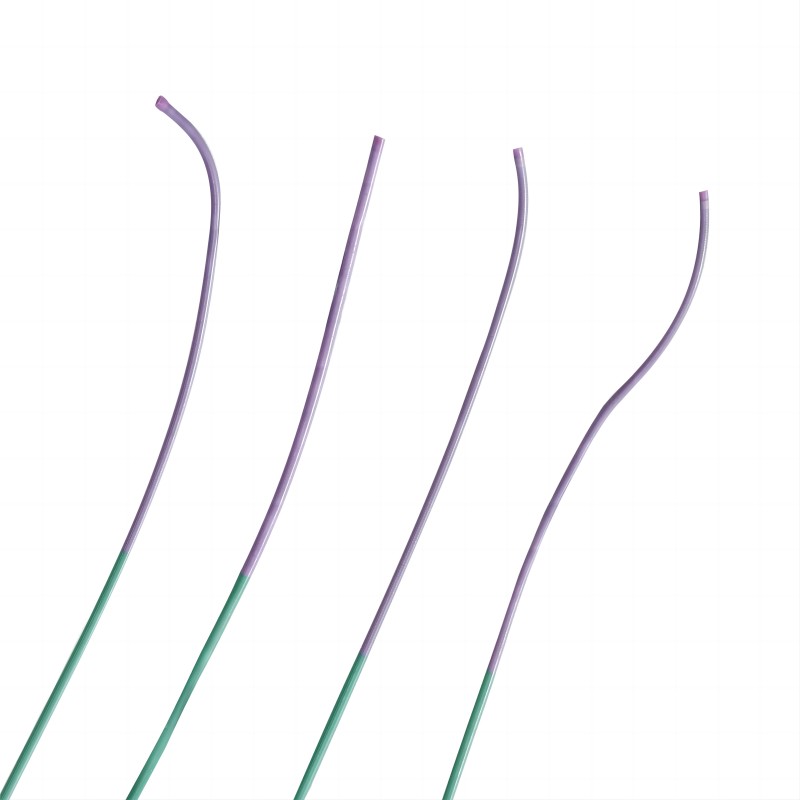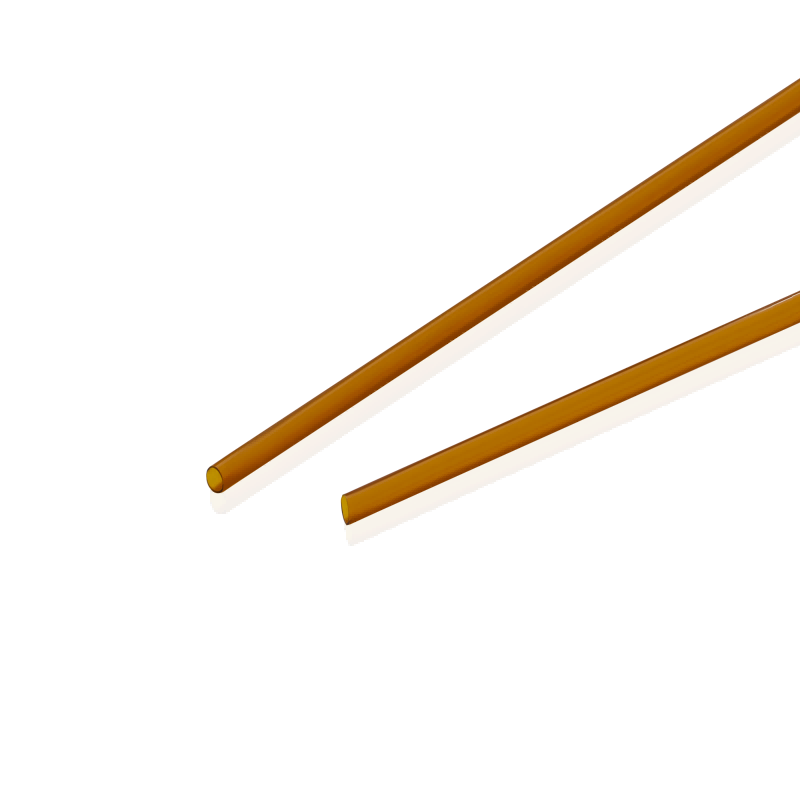Microcatheter
Features:1. PTFE inner layer allows for smooth passage for embolic agents; |

- Outer Diameter: Typically ranges from 0.5 to 3.0 millimeters, depending on the specific application and clinical need.
- Length: Variable, tailored to accommodate different procedural requirements and patient anatomies.
- Material: Constructed from biocompatible materials such as polyurethane, nylon, or PTFE (polytetrafluoroethylene), ensuring compatibility with bodily tissues and minimizing the risk of adverse reactions.
- Tip Configuration: Available in a variety of shapes, including straight, angled, and tapered tips, to facilitate navigation through tortuous vessels and challenging anatomical structures.
- Trackability: Engineered for enhanced maneuverability and trackability, enabling smooth advancement through complex vascular pathways.
- Angiography and Angioplasty: Microcatheters are commonly used in angiography and angioplasty procedures to access and treat narrow or obstructed blood vessels, such as those affected by arterial stenosis or occlusions.
- Embolization: Microcatheters facilitate the delivery of embolic agents to block blood flow to abnormal vessels or tumors, effectively treating conditions such as arteriovenous malformations (AVMs), aneurysms, and uterine fibroids.
- Thrombectomy: Microcatheters enable the mechanical or pharmacological removal of blood clots from blood vessels, restoring normal blood flow and preventing complications such as stroke or pulmonary embolism.
- Drug Delivery: Microcatheters are utilized to deliver therapeutic drugs directly to target sites within the vasculature, enabling localized treatment of conditions such as cancer, peripheral artery disease, and pulmonary hypertension.
- Vascular Access: Microcatheters provide access to the vascular system for diagnostic procedures such as angiography, intravascular ultrasound (IVUS), and fractional flow reserve (FFR) measurements, as well as for the placement of intravascular devices such as stents, balloons, and filters.
Related products
PI Tube
The Demax PI Tube is constructed using polyimide (PI), a high-performance polymer known for its excellent mechanical properties and chemical resistance. This tubing is manufactured to meet the stringent standards of the medical industry, ensuring biocompatibility and safety for patient use. It is free from latex, phthalates, and other harmful substances, minimizing the risk of adverse reactions or complications.
Braid & Coil Reinforcement Tube
The Demax Braid & Coil Reinforcement Tube is an innovative medical device designed to provide enhanced strength and flexibility for a wide range of medical applications. Crafted with precision and utilizing advanced materials, this reinforced tubing offers exceptional performance and reliability, making it an indispensable tool for medical professionals in various clinical settings.
Coating
Precision Medical Tubing Services Coating from Demax involves the application of specialized coatings onto medical-grade tubing substrates to enhance their performance and functionality. These coatings may include hydrophilic coatings, hydrophobic coatings, antimicrobial coatings, drug-eluting coatings, and more, depending on the specific requirements of the medical device and application. The coating materials are carefully selected for their biocompatibility, adhesion properties, and compatibility with the substrate material to ensure optimal performance and safety. Each coating is applied using precise coating techniques to achieve uniform coverage and consistent thickness, resulting in medical tubing with enhanced lubricity, biocompatibility, and other desirable properties.
TPU Tube
Demax TPU tubes are meticulously crafted from Thermoplastic Polyurethane (TPU), a premium synthetic polymer renowned for its exceptional elasticity, durability, and resistance to abrasion, chemicals, and environmental factors. This composition ensures the tubes’ longevity and reliability, even in the most demanding conditions. Demax’s commitment to quality extends to every aspect of their manufacturing process, from sourcing the finest materials to employing advanced production techniques. The result is a TPU tube that meets stringent industry standards, providing customers with confidence and peace of mind in their critical applications. Whether in medical procedures, laboratory experiments, or industrial processes, Demax TPU tubes deliver unmatched performance and durability, making them the preferred choice for professionals across various sectors.




